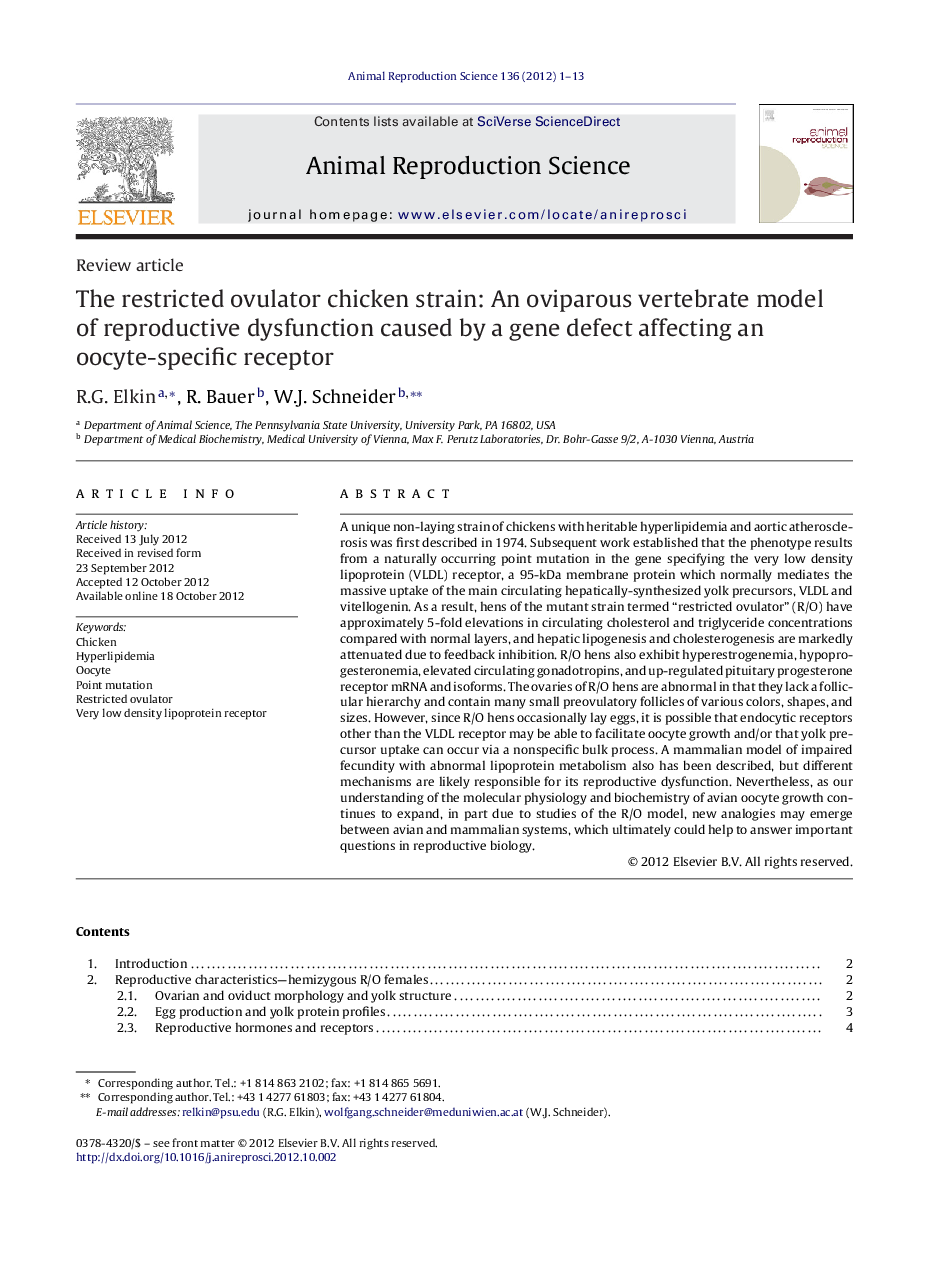| Article ID | Journal | Published Year | Pages | File Type |
|---|---|---|---|---|
| 8405255 | Animal Reproduction Science | 2012 | 13 Pages |
Abstract
A unique non-laying strain of chickens with heritable hyperlipidemia and aortic atherosclerosis was first described in 1974. Subsequent work established that the phenotype results from a naturally occurring point mutation in the gene specifying the very low density lipoprotein (VLDL) receptor, a 95-kDa membrane protein which normally mediates the massive uptake of the main circulating hepatically-synthesized yolk precursors, VLDL and vitellogenin. As a result, hens of the mutant strain termed “restricted ovulator” (R/O) have approximately 5-fold elevations in circulating cholesterol and triglyceride concentrations compared with normal layers, and hepatic lipogenesis and cholesterogenesis are markedly attenuated due to feedback inhibition. R/O hens also exhibit hyperestrogenemia, hypoprogesteronemia, elevated circulating gonadotropins, and up-regulated pituitary progesterone receptor mRNA and isoforms. The ovaries of R/O hens are abnormal in that they lack a follicular hierarchy and contain many small preovulatory follicles of various colors, shapes, and sizes. However, since R/O hens occasionally lay eggs, it is possible that endocytic receptors other than the VLDL receptor may be able to facilitate oocyte growth and/or that yolk precursor uptake can occur via a nonspecific bulk process. A mammalian model of impaired fecundity with abnormal lipoprotein metabolism also has been described, but different mechanisms are likely responsible for its reproductive dysfunction. Nevertheless, as our understanding of the molecular physiology and biochemistry of avian oocyte growth continues to expand, in part due to studies of the R/O model, new analogies may emerge between avian and mammalian systems, which ultimately could help to answer important questions in reproductive biology.
Related Topics
Life Sciences
Agricultural and Biological Sciences
Animal Science and Zoology
Authors
R.G. Elkin, R. Bauer, W.J. Schneider,
